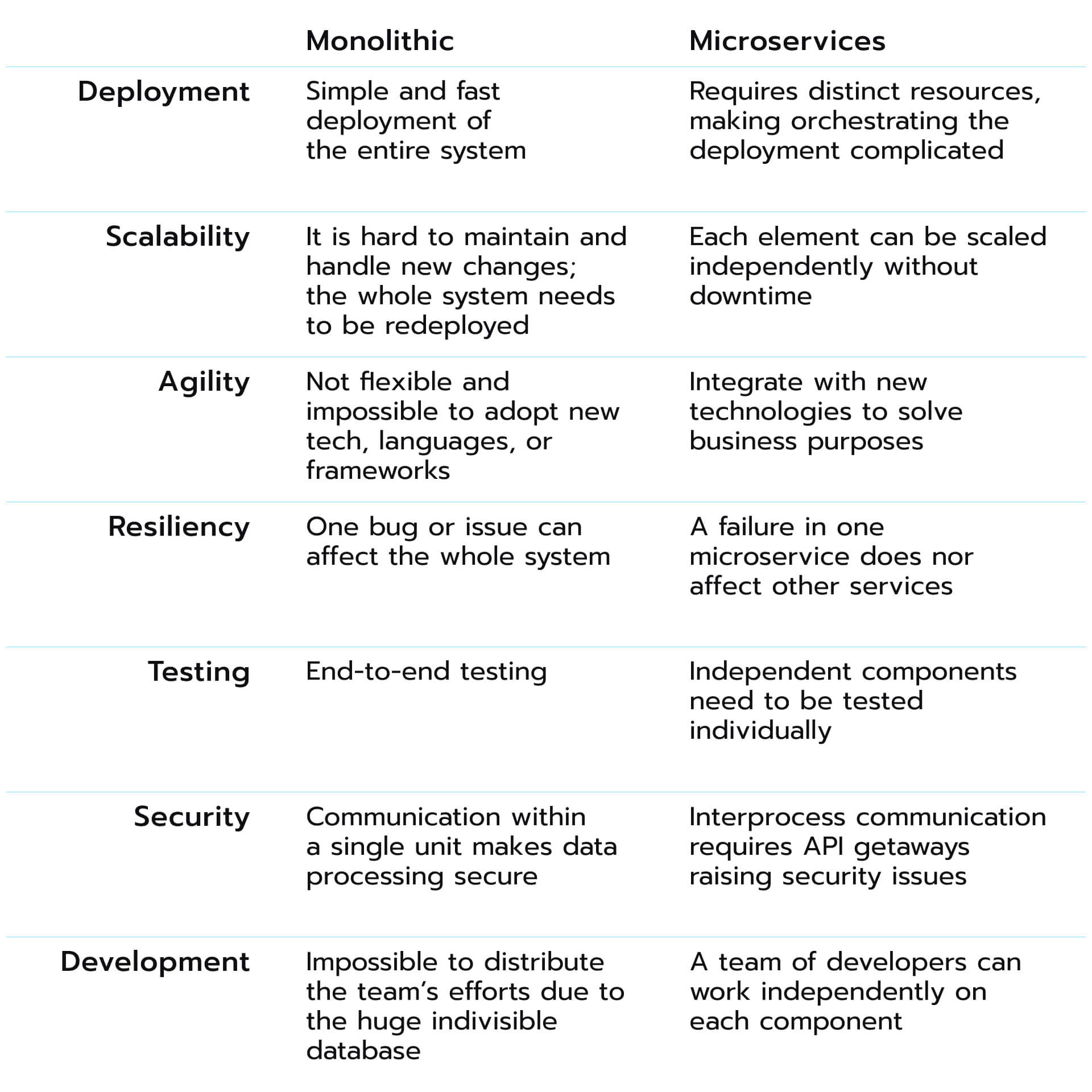How to choose the best cloud platform for AI
Explore a strategy that shows you how to choose a cloud platform for your AI goals. Use Avenga’s Cloud Companion to speed up your decision-making.

Navigating the architectural choices: microservices vs. monoliths.
Businesses tend to embrace new approaches toward their products to scale and be on top of competitors. The choice of the architectural style of the software component of the application (monolithic vs. monolithic vs. microservices architecture) is the determinant factor of how your application will function and how.
Subsequently, it will shift the business paradigm. A few years ago, microservices represented a fundamental shift in how companies approached software development. Let’s take, for example, Netflix, Amazon, or Google, who switched from a monolithic architecture to a microservices-based architecture to increase the flexibility and scalability of their products.
So why do the microservices architectures prevail over the more monolithic system approach, and which one will be the most suitable for your business? To answer these questions, it is crucial to understand the goals of microservices deployments of a particular application and its business requirements.
A monolithic architecture is considered a traditional approach toward creating applications and is used to build them as separate and indivisible units. By that, we mean that all multiple related functions are managed and controlled in one location. Therefore, in monolithic architectures, applications tend to have huge codebases. Let us explain the entire process of data transfer and code logic. The inner structure of each software application comprises three parts:
All the parts mentioned above are interconnected and depend on one another. Therefore, to make even a tiny alteration in one function, a developer needs to access the same code base and build and deploy an updated version of all the services and the server-side application’s front-side interface. Thus, the whole stack will have to be altered. Considering the nowaday’s Agile approach, a monolithic app architecture is against its principles.
In contrast to monolithic architecture, the microservices approach allows for building complex and scalable application infrastructure with single-purpose and individual services that have their business logic and database. The microservices architecture functions as a distributed system, the components of which are interacted independently through defined methods – business-oriented APIs. Within a microservice architecture, each service has its specific business goal and can be developed and deployed separately, updated, and scaled independently.
The most significant business benefit of the microservice-based approach over the monolithic one encompasses a substantial increase in efficiency and elimination of technical debt. However, like any solution, the two monolithic systems and microservices approaches have both benefits and drawbacks. Let’s shed light on each architecture to understand which is right for your microservices development project.
In software architecture, the monolithic approach, despite being a traditional method, still holds its ground due to several inherent advantages. However, it’s not without its drawbacks, particularly when scaling and adopting new technologies. Let’s delve into the pros and cons of monolithic architecture to gain a comprehensive understanding.
Monolithic architecture, a traditional approach to building applications, offers several advantages:
Despite these benefits, monolithic applications face scalability, efficiency, cost-effective technology adoption, and team collaboration challenges, especially when the application needs to evolve and scale over time.
The drawbacks of monolithic-based applications mainly concern the application’s perspective and how to manage the application when it will scale and upgrade in the long run. Besides, there are other cons of the whole monolithic application” approach:
While monolithic architecture offers simplicity and ease of development, it may pose significant challenges in scalability, efficiency, and technology adoption, making it less flexible for applications and multiple services that must evolve.
The microservices approach to distributed systems allows for extensive application development, which consists of more minor, independent services (modular software components) that communicate with each other via lightweight protocols. Since each service has its database, it is possible to use the type of database suited for the microservice’s needs. Considering that, let’s outline the main advantages of applying the microservices architecture to software/app development.
Microservices architecture, characterized by its modular and independent components, offers benefits such as agility, scalability, easy management, resiliency, and easy onboarding, making it a preferred choice for complex and evolving applications.
While microservices provide flexibility and scalability over container systems, they also introduce complexity, security concerns, higher operational costs, and challenges in handling cross-cutting concerns, debugging, and testing.
In contrast to the entire monolithic application architecture, microservices do not limit the business capabilities of the development team in size and scope, providing the capability to be integrated with other services and different tech stacks. Nevertheless, there are still drawbacks to the microservices approach, mainly related to its complex nature. Let’s go through some of them:
Despite the flexibility and scalability offered by microservices, they come with their own challenges, including increased complexity, security concerns, higher operational costs, and difficulties in debugging and testing, which need to be carefully considered before adopting a microservices-based application.
To summarize the approaches mentioned earlier, the main advantage of the monolithic approach is easy understanding and quick development of legacy systems. In contrast, the microservices approach allows for scalability and integration of the entire system with any technology. To determine which architecture best suits your project, it is good to formulate situations when you need either a monolith architecture or microservices.
With their simplicity and ease of implementation, monolithic applications can be ideal for specific scenarios.
Therefore, monolithic architecture can be suitable for startups, projects with tight timelines, or applications that do not require complex systems or frequent upgrades, or new functionalities.
On the other hand, the microservices architecture, with its scalability and flexibility, is better suited for specific situations.
Thus, microservices architecture is an excellent choice for businesses aiming for scalability, future upgrades, continuous deployment, and adopting new technologies, provided they have the expertise and resources to manage the complexity.
 Final remarks
Final remarksThe selection of monolithic and microservices architecture applications the architectural type depends on the organizational structure of your project. A monolithic approach will be more suitable if your business is a startup with a small team of developers. But microservices would be a perfect fit if your goal is to scale your business and you are looking for solutions to upgrade your product.
Microservices are preferable to monoliths due to their capability to manage growing data sets. However, they may not always be efficient for small organizations that do not follow Agile approaches. Therefore, it is essential to understand your business objective and company culture.
What type of software architecture will suit your project? Contact us, and we will provide experts skilled in both approaches, matched with your product and your industry.
* US and Canada, exceptions apply
Ready to innovate your business?
We are! Let’s kick-off our journey to success!